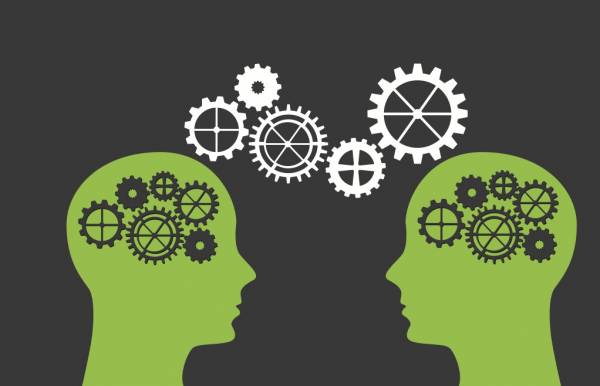Academia is concerned with making sense of the world. College and university undergraduates engage with the ideas and cultural dictates of “the canon,” which is the body of knowledge that currently exists and that the institution of higher learning writ large has determined educated citizens should be familiar with. (Of course, there is much debate about the fact that the canon has historically been skewed white and male, marginalizing women and other ethnic groups. This is always something to keep in mind, though not necessarily relevant here.)
When undergraduates move on to graduate school, they delve more deeply into an understanding of the appropriate procedures and habits of mind required to actually contribute to the canon. They learn more about how to conduct research of their own that addresses gaps in our current understanding of the world, whether in science, literature, human behavior, or other fields. Different fields foreground different specific expectations about how this is done, but generally speaking, people who would make such contributions and who go on to teach in their chosen fields learn how to situate their ideas in this already-established canon. They learn appropriate ways, using widely recognized tools and rhetoric, to acknowledge the work of scholars who have come before them.
Doing so serves multiple purposes. First, it helps scholars understand the lay of the land of their field or discipline. By reading widely and then narrowing their focus to what they want to study or teach, they develop a picture of how their work is situated in the larger landscape of human knowledge. Second, this practice also helps would-be researchers identify the previously mentioned gaps in our understanding of the world so they can focus their efforts on work that is truly needed and not redundant. And finally, the development of these skills helps with proper attribution of ideas so that one scholar does not take credit for the work of another. This last is vitally important, as evidenced by the academic integrity policies that are de rigueur at most if not all colleges and universities, for students and faculty alike.
However, issues of academic integrity, plagiarism, and intellectual property are anything but straightforward. Academics like historians Doris Kearns Goodwin and Stephen Ambrose, as well as journalists like Jayson Blair, to name just a few examples, are established figures in their respective fields who should arguably be very familiar with the appropriate procedures in their chosen fields. And yet, each of them has been identified as individuals who either inadvertently or purposefully passed off as their own ideas that were in fact developed by someone else.
Questions about where one person’s ideas end and another’s begin have no single correct answer. As an illustration, The Publication Manual of the American Psychological Association, which represents one school of thought about how to create, structure, and disseminate academic information, is hundreds of pages long and in its sixth edition. And yet, there is still frequently widespread confusion and disagreement about these fundamental issues.
 As someone who identifies as an academic, I find that BJJ has many of the trappings of academe, and I find academe to be a helpful metaphor for thinking about BJJ (and vice versa). I have always worked very hard to be an ethical and responsible academic, and I’d like to think I do the same in BJJ. But when I think about this concept of attribution of ideas in my own teaching and learning processes in BJJ, I feel I know relatively little about what constitutes appropriate behavior.
As someone who identifies as an academic, I find that BJJ has many of the trappings of academe, and I find academe to be a helpful metaphor for thinking about BJJ (and vice versa). I have always worked very hard to be an ethical and responsible academic, and I’d like to think I do the same in BJJ. But when I think about this concept of attribution of ideas in my own teaching and learning processes in BJJ, I feel I know relatively little about what constitutes appropriate behavior.
It’s probably safe to say everyone who knows something about BJJ learned it from someone else or at least acquired from someone else a foundation upon which they could go forth and build a contribution to our particular canon. We in the grappling community police ourselves and our claims of rank by tracing our lineages back to “legitimate” practitioners. And as a subculture we talk about different kinds of games – “smashy” or “flowy” – and we attribute certain signature moves or habits to certain grapplers. But here’s where the guidelines seem to break down and I’m left with more questions than answers about how I can ethically use and pass on knowledge I have gained while still paying appropriate homage to the people from whom I learned it.
To start, what constitutes grappling knowledge that we need not attribute to a source, and what on the other hand might arguably be referred to as the intellectual property of certain individuals? The concept of the “guard” is common to every game, of course, though of course there are many flavors. On the other hand, the de la Riva guard is a particular flavor that is named for Ricardo de la Riva Goded. What, if any, benefits or privileges should he enjoy vis-à-vis his namesake guard? Is it enough that he is essentially cited every time someone teaches anything related to this guard by virtue of the fact that they call it by (his) name? What about other movement patterns that are associated in the community’s mind with certain practitioners but are not named after those practitioners?
Further, if I teach a movement pattern or a sequence I learned from one of my instructors, what is my ethical responsibility to my instructor? On one hand, I could argue that in order to teach effectively, I have to filter the movements through my own experience and find my own language to convey what I have learned. On the other hand, I could also argue that were it not for the instructor, I would not have even a basic understanding of the sequence in the first place. So, how do I cite my source, especially if s/he learned this sequence from someone else?
Further still, what if I am looking to benefit financially from what I have learned from others, by hosting a seminar, creating a DVD, or otherwise teaching outside the academy where I learned what I intend to teach? What is my ethical and financial responsibility, especially if my game turns out to be an eclectic mix, shaped by multiple teachers and influences?
 Ultimately, what I want to know is: Just as I would try to do in academe, how do I acknowledge the fact that my particular game and my particular orientation to training, teaching, and describing jiu jitsu are rooted in a larger context created by many individuals who came before me and who continue to push the envelope? How do I give credit where credit is due? As in academe, there doesn’t seem to be one specific answer, but I think the question is a good one to consider.
Ultimately, what I want to know is: Just as I would try to do in academe, how do I acknowledge the fact that my particular game and my particular orientation to training, teaching, and describing jiu jitsu are rooted in a larger context created by many individuals who came before me and who continue to push the envelope? How do I give credit where credit is due? As in academe, there doesn’t seem to be one specific answer, but I think the question is a good one to consider.
At the moment, I deal with such issues on a case-by-case basis, discussing them with the people they are most likely to affect and acting in a manner consistent with their preferences and my basic sense of fairness. Many people I know do the same, as I have talked about these issues with other grapplers whom I respect. But the rules aren’t hard and fast, and of course my sense of fairness isn’t infallible. Nor is it likely to be consistent with absolutely everyone else’s. So is there a need for a code of conduct related to knowledge generation and transfer in grappling, similar to the academic integrity policies in academe? Is there a way for us to abstract appropriate sets of principles about attribution of sources of grappling information? Or am I just overreacting?
What do you think? Do you have opinions or even a set of guidelines about this issue of what constitutes “proper” attribution of BJJ knowledge? Post your thoughts to comments.
Photos courtesy of Shutterstock.






